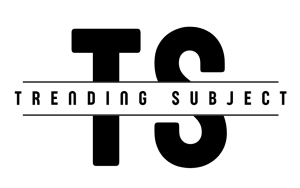If Illinois Governor J.B. Pritzker thought he could breeze through a primetime interview on Special Report without confronting the brutal realities of crime in his state’s flagship city, he was sorely mistaken.
Pressed by Fox News anchor Bret Baier over Chicago’s distinction as the U.S. city with the highest murder rate in 2024, Pritzker attempted to deflect with a surprisingly confident — and provably false — claim: “We’re not in the top 30.”
Within seconds, Baier’s producers cut to FBI crime data showing exactly the opposite: Chicago leads all major U.S. cities in murders, with a staggering 17.5 murders per 100,000 residents this year — ahead of Philadelphia, Houston, Dallas, Phoenix, and New York. The cold, hard numbers directly contradicted the governor’s talking point in real-time.
Cornered, Pritzker doubled down, pointing to a 50% decline in the murder rate over four years and “double-digit drops” each year. And in fairness, 2024 has seen a measurable decrease in killings: 188 homicides recorded between January and June, the lowest mid-year number since 2014. Shootings are reportedly down 38% as well, according to the mayor’s office.
But optics matter — and Pritzker’s defensiveness only highlighted the total disconnect between progress on paper and what residents and business owners continue to experience daily on the ground.
Because despite the statistical downturn, Chicago still leads the nation in raw murder rate, and broader crime metrics remain grim. FBI data shows 539.8 violent crimes and 3,472 property crimes per 100,000 residents in 2024 — totaling over 4,000 crimes per 100,000 people in a city that has seen everything from mass looting of high-end retailers to nightly “street takeovers” that resemble scenes from a dystopian film.
The reality? The governor’s problem isn’t just the crime — it’s the perception of chaos, lawlessness, and lack of control. And no amount of statistics can paper over the fact that Chicago’s national reputation is in freefall.
President Donald Trump has capitalized on that imagery, referring to the city as “Chiraq” and labeling it “the murder capital of the world.” He’s not just name-calling, either — he’s acting. Trump recently deployed 400 National Guard troops to the city, 200 of them federalized by the Pentagon, citing Chicago’s inability to protect ICE officers during a month-long standoff with Antifa-aligned protesters.
ICE agents have reported repeated clashes with mobs attempting to obstruct detention and deportation operations. Pritzker and Chicago Mayor Brandon Johnson responded with lawsuits and combative rhetoric, but so far, the federal presence has only grown.
The governor’s fiery counterpunch — “If you come for my people, you come through me. So come and get me.” — might have played well to the cameras, but it does little to address the underlying crisis. Even if the murder rate is trending downward, Chicago remains a magnet for national criticism, much of it earned through repeated breakdowns in public order, spiraling retail theft, and a political class too quick to blame optics and too slow to fix broken systems.
Pritzker’s wealth and polished messaging might carry him through a TV interview — but no amount of spin can erase the stark reality that Chicago, in 2024, is still leading for all the wrong reasons. And unless leadership in both Springfield and City Hall focuses more on outcomes than outrage, that title isn’t going away anytime soon.








